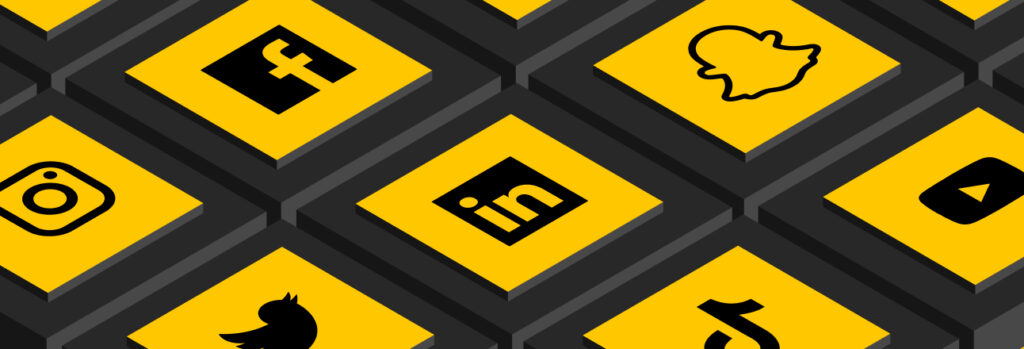You can protect your digital footprint by deleting any accounts you no longer use, adjusting your privacy settings, avoiding oversharing on social media and using a
Updated on August 19, 2024.
Social media plays a vital role in allowing people from all over the world to communicate almost instantly; however, it’s important to ensure your social media accounts are safe from cybercriminals and other individuals with malicious intent.
Here are seven tips to help you stay safe on social media.
1. Use strong passwords
Cyber attacks are growing in complexity and frequency, which makes your password choice more important than ever. To avoid you social media accounts from getting hacked it’s important to secure them with strong passwords.
Here are some tips to help ensure your passwords are strong:
- Include a combination of letters, special characters and numbers
- Make your password a minimum length of 16 characters
- Avoid any personal information that can be found online, such as your birthday, school, family members or your dog’s name
- Avoid reusing the same password or variations of the same password across multiple accounts
- Use a password manager to create and store strong, unique passwords in a secure vault
2. Enable Multi-Factor Authentication (MFA)
Multi-factor authentication is important to enable on your online accounts since it adds additional layers of security. For example, if someone were to find out what your Instagram password is, having MFA enabled on your account would prevent them from being able to gain access to it. This is because they’d have to verify your identity, which they won’t be able to do.
Here are some types of MFA to consider adding to your accounts:
- Authenticator apps: An authenticator app generates Time-based One-Time Password (TOTP) codes every 30-60 seconds. To verify your identity using this type of MFA, you just copy and paste the TOTP code from the authenticator app into the login portal after entering your password.
- Hardware security keys: Hardware security keys are USB-like devices that are used to verify your identity by tapping or inserting it into your device.
- SMS and email tokens: SMS and email tokens are one of the most popular methods of authentication because they’re ease-of-use. This type of MFA is when you receive a TOTP code through text message or email and input that code into the login portal after inputting your password.
3. Be selective with your friend and follow requests
When it comes to social media, it’s important to be cautious of the people you let follow your accounts. If you don’t know the person sending your a friend or follow request, it’s safer to decline their invitation. This is because it could be a fake account attempting to obtain your personal information by browsing your profile or someone attempting to stalk or harass you.
4. Don’t post personal information
While it’s tempting to share personal information about your life on social media, avoid from publishing critical personal information, such as your home address, credit card number or phone number as this could be used to steal your identity. A best practice is avoid oversharing on social media, so no one with malicious intent can easily steal your identity.
5. Don’t share your travel plans before they happen
It’s common for people to post their vacations on social media. After all, is it really a vacation if you don’t document it on Instagram? If you post about your future travel plans on social media, someone could target your home since they’re aware that you’ll be gone for a period of time. To prevent this from happening, avoid sharing your geolocation when traveling and always share the least amount of information possible as you don’t know who could be watching your activity through your posts. If you are traveling and want to post about it, the safest thing to do is post your vacation pictures when you’re back home.
6. Be cautious of phishing attempts
Phishing is when cybercriminals try to get you into revealing personal information by pretending to be someone they’re not. When cybercriminals carry out phishing attacks on social media, they often send you direct messages containing malicious links with a message urging you to click on them. Clicking these links can lead you to websites that look legitimate but are designed to steal your information or immediately infect your device with malware. To avoid from falling victim to these phishing attempts it’s important to be aware of them and learn to spot them.
Some common indicators of phishing include:
- Urgent language
- Being threatened with serious consequences
- Offers that seem too good to be true
- Unsolicited messages containing links and attachments
- Misspellings and grammatical errors
- Being asked for your personal information
7. Use the strongest privacy settings
Addionatly, you should also ensure that you use the strongest privacy settings on your social media accounts. Some settings you should consider enabling include:
- Privating your profile
- Hiding your friend or follow list
- Hiding your posts from the public
- Disabling searchability in Google and other search engines
Protect your social media accounts
The posts you make on your social media accounts can affect your digital footprint and make it easier for cybercriminals to target you. However, by taking steps to secure your social media accounts you can help keep your information safe while also continuing to enjoy your social media apps like you usually do.
Curious to see how a password manager helps you secure your social media accounts? Start a free 30-day trial of Keeper® today.

